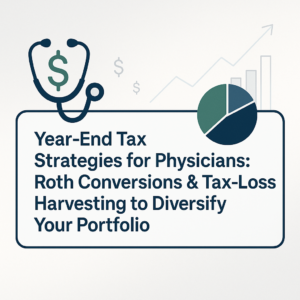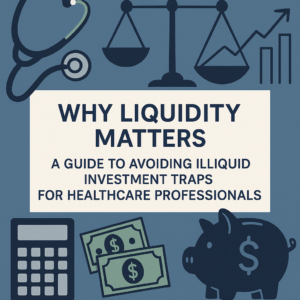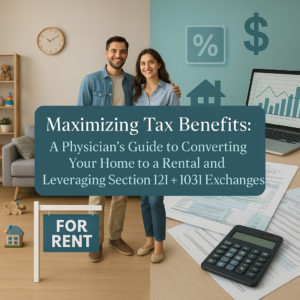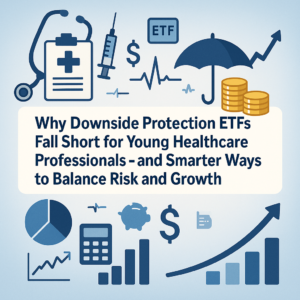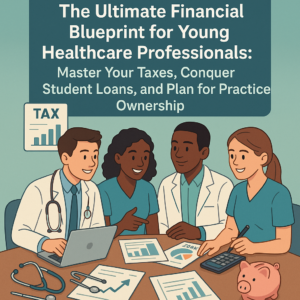Navigating Retirement Account Distributions and IRS Compliance for Healthcare Professionals
As a high-earning healthcare professional—whether you’re a physician, dentist, pharmacist, physical therapist, or psychologist—your time is precious. Juggling patient care, continuing education, and personal life leaves little bandwidth for complex tax planning. Yet when you tap into retirement account distributions, the stakes are high: unreported withdrawals can trigger audits, steep penalties, and unwanted stress.
In this comprehensive guide, we’ll walk you through best practices for reporting retirement account distribution, avoiding an IRS audit, and structuring withdrawals to minimize tax liability. We’ll also share a real‐world scenario that highlights what can go wrong—and how you can prevent it. By the end, you’ll have actionable steps tailored for healthcare professionals to keep your practice—and your finances—running smoothly.
Why Proper Reporting Matters
Retirement plans such as 401(k)s, traditional IRAs, and SEP IRAs are powerful vehicles for building long‐term wealth. However, distributions from these accounts are generally treated as taxable income in the year you receive them. If you withdraw funds and neglect to report the amount correctly, the IRS can:
- Initiate an audit of your entire tax return.
- Assess additional taxes, penalties, and interest.
- Pursue collection actions like liens or wage garnishment.
For busy healthcare providers, such disruptions can be more than an administrative headache—they can threaten your professional reputation and personal well‐being. Proper tax reporting is not optional. It’s fundamental to protecting your assets and maintaining focus on patient care.
Common Pitfalls for Healthcare Professionals
Time constraints, multiple income streams, and complex benefit packages can increase the risk of oversight. Some frequent errors include:
- Missing Form 1099-R: Your plan administrator issues a Form 1099-R for distributions. Failing to obtain or include it on your return can raise red flags.
- Incorrectly Reporting Basis: If you made nondeductible IRA contributions, you must calculate and report your basis—otherwise the IRS may tax your entire withdrawal.
- Overlooking Early Withdrawal Penalties: Withdrawals prior to age 59½ often incur a 10% penalty on top of regular income tax, unless an exception applies.
- Misunderstanding Rollovers: A direct rollover avoids tax, while an indirect rollover has a 60‐day window. Messing this up can convert your rollover into a taxable distribution.
By familiarizing yourself with these pitfalls, you can take targeted steps to ensure compliance and avoid costly surprises.
Real‐World Case Study: An Unreported Distribution
Consider “Dr. Alvarez,” a successful dentist in her mid‐30s. She decided to withdraw $60,000 from her Fidelity 401(k) to fund a down payment on a new practice location. Believing the funds would be automatically handled, she overlooked the need to report the full amount on her tax return.
Fast forward nine months: The IRS notified Dr. Alvarez that her 2022 return was audited. The unreported $60,000 triggered an additional tax bill of over $20,000, plus penalties and interest. To make matters worse, the IRS threatened a lien on her personal residence and potential wage garnishment.
Dr. Alvarez’s story underscores how even experienced professionals can slip up—and how quickly tax consequences can escalate.
Avoiding IRS Audits: Proactive Steps
Preventing an audit—or at least mitigating its impact—starts with proactive planning. Here are best practices:
- Maintain Organized Records: Keep copies of Form 1099-R, account statements, and proof of rollovers for at least seven years.
- Work with Qualified Professionals: A Certified Public Accountant (CPA) or Enrolled Agent (EA) can help ensure accurate reporting and catch red flags before you file.
- Use Tax Planning Software: Many financial planning platforms integrate with investment accounts to track distributions and tax impacts in real time.
- Plan Withdrawals Strategically: Spread distributions over multiple years to avoid spikes in taxable income and potential loss of deductions or credits.
- Understand Early Withdrawal Exceptions: Certain medical expenses, first‐time home purchases, and qualified education costs may qualify you for penalty exemptions.
By embedding these steps into your financial routine, you’ll significantly reduce the likelihood of unintentional underreporting.
Structuring Retirement Distributions to Minimize Taxes
Strategic distribution planning can save you tens of thousands in taxes over time. Consider these tactics:
- Bucket Strategy: Maintain separate “buckets” of funds based on age and tax treatment—taxable accounts, tax‐deferred accounts, and Roth accounts. Pull from each bucket in a tax‐efficient order.
- Roth Conversions: During lower‐income years (e.g., parental leave, sabbaticals), convert traditional IRA funds to Roth IRA to lock in current tax rates.
- Qualified Charitable Distributions (QCDs): If you’re over 70½, direct up to $100,000 from your IRA to charity to satisfy Required Minimum Distributions (RMDs) without recognizing income.
- Health Savings Account (HSA) Integration: Use HSA funds for medical expenses first, allowing your retirement accounts to grow tax‐deferred.
- Income Smoothing: Leverage salary deferrals or profit‐sharing contributions in high‐earning years, then draw from those balances when your practice income dips.
What to Do If You’re Audited
If you receive an audit notice, don’t panic. Follow these steps:
- Review the Notice Carefully: Identify which tax year and items are under review.
- Contact Your Advisor or Tax Pro: Engage a professional immediately to guide your response and represent you before the IRS.
- Gather Documentation: Compile all relevant forms (1099-R, bank statements, proof of basis) and explanatory letters if necessary.
- Negotiate if Needed: In cases of additional liability, request a payment plan or an Offer in Compromise if you cannot pay at once.
- Learn and Adjust: Post‐audit, revise your reporting and planning processes to prevent recurrence.
Remember, timely action and transparent communication often lead to more favorable outcomes.
Leveraging Professional Help
No matter how savvy you are, the tax code evolves constantly. Healthcare professionals can benefit greatly from collaborating with specialists who understand your unique challenges:
- Registered Investment Advisors (RIAs): Offer comprehensive financial planning, investment management, and tax strategies tailored to your career trajectory.
- CPAs and Tax EAs: Focus on year‐end tax preparation, audit representation, and advanced tax planning techniques.
- Estate Planning Attorneys: Coordinate beneficiary designations, trusts, and legacy planning to manage tax liabilities across generations.
At Mainstay Capital, our holistic approach ensures that your retirement distribution strategy aligns with both your clinical career and personal goals. Learn more about Our Process, explore our Services, or get to know our team on the About Us page.
Checklist: Year-End Prep for Retirement Distributions
Use this checklist during Q4 to stay ahead:
- Confirm receipt of all Form 1099-Rs and review for accuracy.
- Calculate nondeductible IRA basis (Form 8606 if applicable).
- Evaluate Roth conversion opportunities based on projected income.
- Review RMD rules and plan Qualified Charitable Distributions if eligible.
- Coordinate with your tax advisor to file extensions or preliminary projections.
- Document any early withdrawal exceptions you intend to claim.
Key Takeaways
- Retirement distributions are typically taxable. Accurate reporting is essential to avoid audits and penalties.
- Healthcare professionals face unique income fluctuations and high tax brackets—strategic planning can yield significant savings.
- Organized records, qualified advisors, and consistent communication with the IRS (if audited) lead to better outcomes.
- Integrating tax-efficient strategies—like Roth conversions, QCDs, and the bucket approach—can reduce lifetime tax bills.
- Partner with an RIA and tax professional who specialize in serving physicians, dentists, pharmacists, physical therapists, and psychologists.
If you’re ready to take control of your retirement distributions and ensure full tax compliance, schedule a complimentary strategy session with us today. Visit our Homepage or Schedule a Call.

